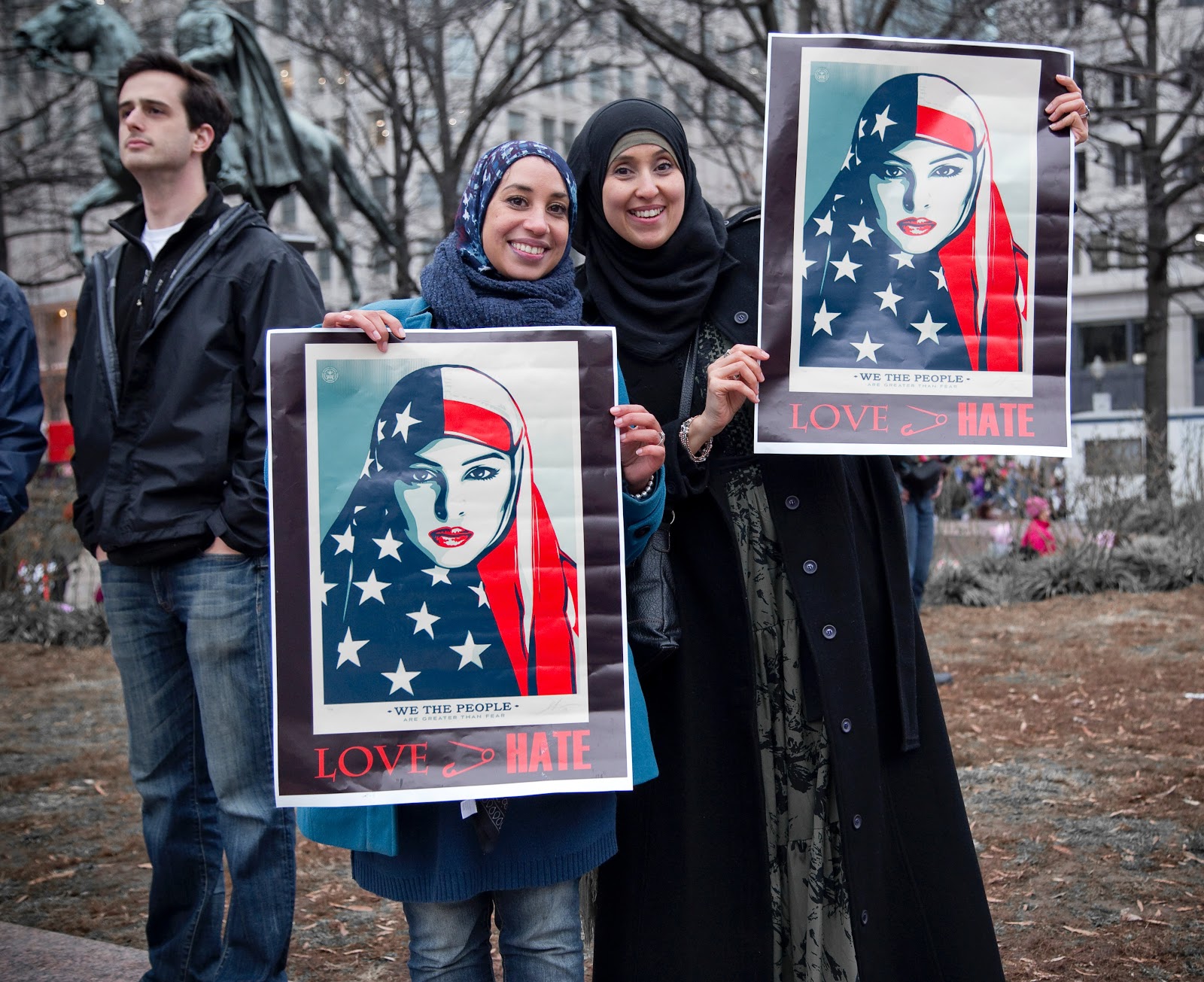Challenging a Culture of Fear: Ibtihaj Muhammad
The stigma of being Muslim in America has long contributed to the shared history between America and the Middle East. The hate and anger of Islamophobia has established new perceptions of a ‘real’ Muslim and a ‘fake’ one. Negative connotations about Islam have been shaped by society and mainstream media influences, persistently associating anyone from the Middle East with terrorism. Rooted in incidents in American history where terrorist plans were executed by Islamic followers, society has turned to fear. Society makes it seem like everyone from the Middle East, everyone wearing hijab, everyone claiming Islam, are terrorists.
In 2016, a New Jersey African American Muslim woman sabre fencer, Ibtihaj Muhammad, became the first Muslim-American to wear hijab during the Olympics. She podiumed, earning the bronze medal on the USA Women’s Sabre Team. This sparked more conversations, and debates, on Muslim-Americans and where they stand in America. Her act of representation at the Olympics surprised and amazed fans and non-fans, Americans, Muslims, and Muslim-Americans. Why the shock? Why the amazement?
Following the Olympics, Muhammad was named the face and inspiration for Mattel’s very first hijab-wearing Barbie doll, to be released sometime in 2018. Imagine it: an African American Muslim Barbie doll. Now, this is huge, because so much scrutiny and unsolicited controversy has been directed towards Muslim-Americans. The doll is set to be a part of the Barbie Shero Collection (she + hero), to reveal that, not only are Muslim-American women people, they’re capable of breaking boundaries and inspiring others like Muhammad.
Because of mainstream media’s exposure, ‘beauty’ has been defined and normalized to look a certain way. The typical representation of Barbie has always involved blue eyes, blonde hair, no curves, and pale skin. Meanwhile, the negative commentary, hate, and stigma of hijab became the recurring theme of representation for Islamophobia. But Muhammad showed up, showed out, and redefined what beauty is… in all shapes, shades, and religions. Beauty can be defined in an abundance of ways, including the choice of wearing hijab.
This plays a part in many Americans’ preconceived notions about Muslim traditions. Unfortunately, sometimes the hate and anger towards Muslims has put their lives in jeopardy. In the media, we see many Islam-related headlines, whether it is an attack by Muslims or an attack on Muslims. I say this because in 2017, there was a series of hate crimes committed against Muslim women. The perpetrators of these religiously-motivated crimes labeled the innocent women as terrorists.
One particular event that occurred in Brooklyn, New York involved a hijab-wearing Muslim woman who was attacked by a group of teenage girls. A Facebook Live video circulated after the attack, where the victim, Souad Kirama, made a tearful statement: “All I did was ask them to be quiet and they started attacking me and punching me in my back [...] People were just standing there watching me being beaten up and being called a ‘f**king terrorist’.”
Society is picky. Society doesn’t applaud maintaining a stable job, or pursuing higher education. Society applauds violence and aggression, as exposed by the media. The media perpetuates the particular lifestyle that we (should) follow… but says who? Mattel decided to create a Barbie that celebrates melanin, and even athletic attributes… features like those of Ibtihaj Muhammad.
See, the thing with Muhammad is, she confidently walked into the 2016 Rio Olympics wearing hijab, ready to compete and reveal to the world that black Muslim women are capable of being anything they want to be, capable of every conceivable achievement, like becoming writers, or doctors, or lawyers, or activists. Muhammad showed the world the significance of hijab as a symbol of representation and identity in America.


